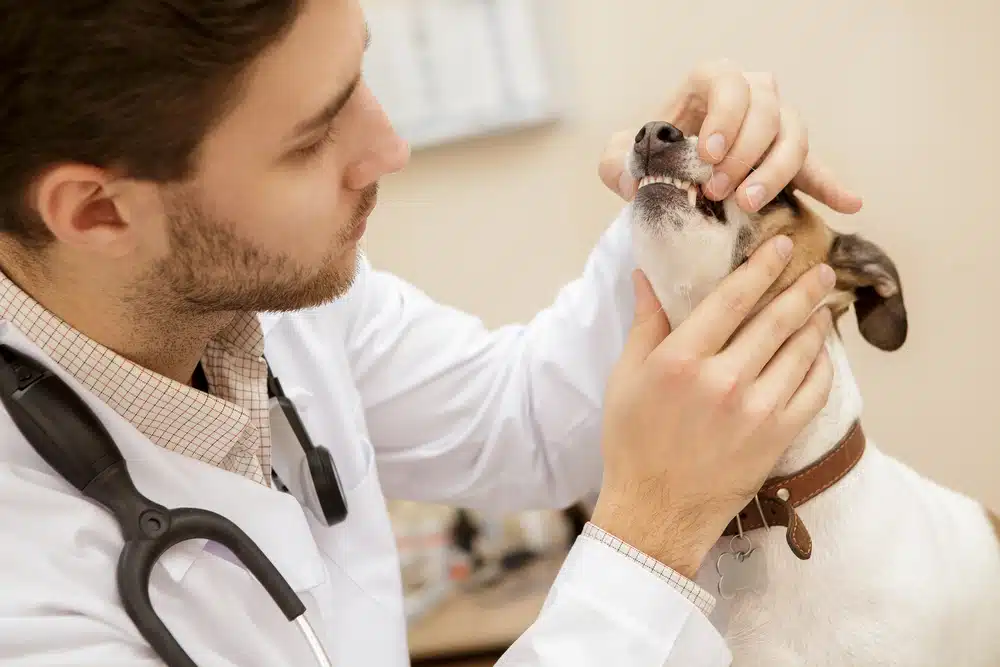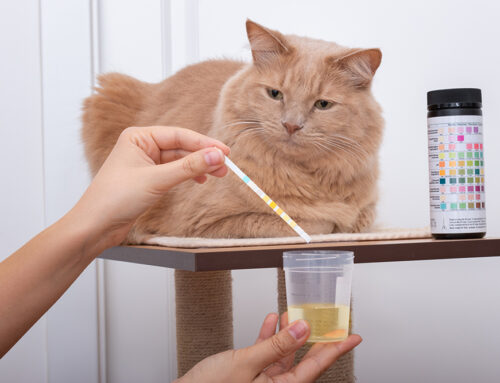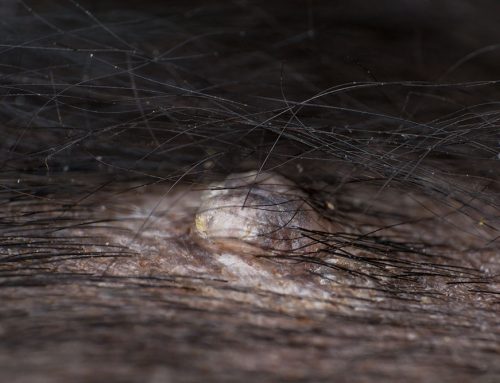Beyond the Surface: Why Non-Anesthetic Cleanings Fail to Protect Pet Teeth
Dental disease hides where brushes and scrapers can’t reach. Non-anesthetic cleanings miss dangerous infections that cause pain and tooth loss. Comprehensive dental care under anesthesia is the only way to ensure lasting oral health.
At The Gentle Vet, we understand the concern many pet owners feel about anesthesia. Our team takes every precaution to make dental procedures safe and stress-free while explaining why anesthesia-free cleanings actually pose greater risks to your pet’s comfort and health.
What Non-Anesthetic Dentals Really Mean for Your Pet
Non-anesthetic dentals sound appealing: clean teeth without anesthesia. But behind the promise is a process that can cause distress and leave disease untreated. During these procedures, pets are awake and restrained while sharp metal tools scrape visible tartar from the teeth. There’s no sedation, no pain relief, and no airway protection.
These cleanings only remove buildup above the gumline. They make teeth look cleaner but do nothing to treat the infection, inflammation, or bone loss happening below. Worse, because teeth appear whiter, owners may believe their pet’s mouth is healthy while disease silently worsens.
Reasons not to choose anesthesia-free pet dentals become obvious when you consider what’s missing. There’s no dental X-rays, no evaluation beneath the surface, and no way to perform safe, complete treatment on an awake animal. The pet dental care standards outlined by the American Veterinary Medical Association make it clear: a proper oral exam and treatment must occur under anesthesia.
The Reality of Restraint Without Sedation
Imagine being held still by strangers while metal instruments scrape inside your mouth. Even calm pets cannot stay motionless through this experience. They may twist, pull away, or panic. Movement during a procedure like this creates real risks:
- Sharp tools can cut gums or fracture teeth
- Bacteria and debris may be inhaled into the lungs
- The experience can cause lasting fear and stress
Small breeds are especially vulnerable to hidden periodontal disease and jaw injury. When non-veterinary personnel perform these procedures, they often miss signs of oral tumors, abscesses, or tooth fractures. Without radiographs and training, the underlying disease goes unnoticed.
The Diseases You Cannot See
Non-anesthetic or “cosmetic” cleanings make teeth look brighter on the surface but leave dangerous problems untouched beneath the gumline. These hidden diseases continue to progress, causing pain, infection, and even life-threatening complications that only a full veterinary dental procedure under anesthesia can identify and treat.
The first invisible threat is periodontal disease in dogs– the most common condition missed during surface cleanings. Because 60% of dental disease lies below the gumline, bacteria continue to erode bone and ligaments even when teeth appear clean. Left untreated, this leads to deep infection, bone loss, and tooth instability.
Hidden infection can also weaken tooth roots until they detach. Tooth loss often occurs when severe periodontal damage goes unnoticed. Infection from these areas may extend behind the eye, forming retrobulbar abscesses in dogs that cause fever, swelling, and eye pain.
In other cases, infection destroys the tissues between the mouth and nasal cavity, creating oronasal and oroantral fistulas. Pets develop persistent nasal discharge and sneezing that can only be corrected surgically.
Problems hidden beneath the surface can also damage teeth from within. Undetected tooth fractures allow bacteria to invade the pulp cavity, leading to chronic pain and bloodstream infection. Likewise, deciduous canine tooth removal in dogs is essential when baby teeth fail to fall out naturally, since retained roots trap food and bacteria and accelerate disease in nearby adult teeth.
More serious still are oral tumors of small animals, which can grow beneath the tongue or gumline unnoticed until advanced. These can only be found and biopsied under anesthesia. Without dental X-rays, even root fractures and jawbone destruction remain invisible. Pet dentals require X-rays to reveal the true health of every tooth and ensure that underlying problems are properly treated.
For some pets, the hidden damage may already have weakened the jaw itself. In these cases, untreated infection can lead to mandibular fractures, especially in small or senior dogs with fragile bone. These conditions don’t arise from cleaning- they are the painful, progressive diseases that cosmetic procedures simply cannot detect.
How Professional Dental Care Protects Your Pet
At The Gentle Vet, we perform dental cleanings under anesthesia to provide complete, safe, and compassionate care.
Comprehensive Examination and Cleaning
Under anesthesia, your pet can be fully evaluated without stress or discomfort. An endotracheal tube keeps the airway protected while our team monitors heart rate, breathing, blood pressure, and oxygen levels throughout the procedure.
Dental radiographs show the entire tooth structure and surrounding bone, allowing us to identify disease below the surface. Scaling removes tartar both above and below the gumline, and polishing smooths enamel to slow plaque buildup. If extractions or additional treatments are needed, we can address them immediately to eliminate pain and infection.
Modern protocols and anesthetic agents make this process extremely safe. With proper monitoring and equipment, the benefits far outweigh the risks.
Understanding Anesthesia Concerns
It’s normal to feel uneasy about anesthesia. That’s why we take every step to ensure your pet’s safety. Before any procedure, we perform pre-anesthetic bloodwork using our diagnostic services to ensure your pet is healthy for anesthesia. For seniors or pets with chronic conditions, we may recommend additional tests or modified protocols.
With today’s advanced monitoring and anesthetic agents, complications are rare. The greater risk comes from untreated dental disease, which can lead to chronic pain and systemic infection. Our team is always available to answer your questions and explain every step of the process.

Supporting Oral Health at Home
Professional dental care is just one part of lifelong oral health. Regular tooth brushing, dental chews, and water additives help reduce plaque between cleanings. The Veterinary Oral Health Council lists products proven effective through clinical testing.
Routine wellness and preventive care visits allow us to assess your pet’s mouth and schedule professional cleanings before problems escalate. Addressing oral disease early preserves teeth, prevents pain, and protects overall health. Left untreated, bacteria from dental infections can spread to the heart, liver, and kidneys, impacting a pet’s longevity and comfort.
Choosing Safety and Complete Care
Non-anesthetic cleanings may look appealing, but they only clean the surface while leaving dangerous disease untreated. They can cause pain, fear, and even injury. True dental health comes from professional veterinary care that treats both what you see and what you can’t.
At The Gentle Vet, our gentle approach ensures every patient receives expert treatment in a calm, compassionate environment. If your pet is due for a dental evaluation or cleaning, contact us or request an appointment to discuss the comprehensive dental services we provide.
Your pet deserves more than clean teeth- they deserve lasting comfort, health, and the gentle care we’re known for.








Leave A Comment